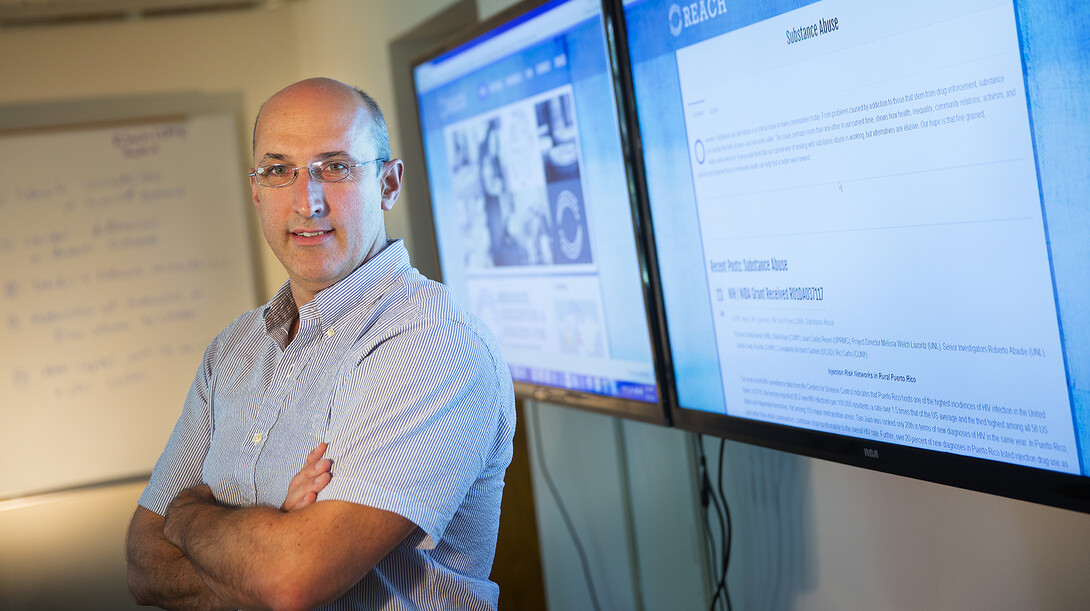
Puerto Rico has one of the highest HIV rates in the United States, primarily from drug users sharing needles. To help prevent HIV infections, a UNL sociologist is using his expertise in studying how people form social connections to explore how drug users’ social lives influence the spread of HIV.
Kirk Dombrowski, head of UNL’s Minority Health Disparities Initiative, recently received $2.9 million from the National Institutes of Health’s National Institute on Drug Abuse for a five-year study investigating how HIV spreads among Puerto Rican drug users. Ultimately, this research should identify effective, cost-efficient prevention strategies targeting HIV infections in rural areas.
While HIV infections on the U.S. mainland occur almost exclusively in large cities, Puerto Rico’s HIV rate is escalating primarily in rural areas. A government slum-clearing program pushed many of the island’s poor people into rural areas without jobs.
“So people who had minor drug problems and a community, now have no one around them and major drug problems,” Dombrowski said.
Statistics illustrate the rural nature of HIV prevalence in Puerto Rico. The U.S. territory ranks in the top 5 percent of states and territories in HIV prevalence per capita, while its only city, San Juan, ranks in just the top 20 percent of U.S. cities.
Dombrowski’s team is working with El Punto de la Montana, a nonprofit organization that supplies drug users with clean needles, to survey and interview users and to understand how their social relationships form, who they share needles with, how information is communicated and other information. Researchers will also know who becomes infected with HIV during that time.
Computers will help analyze how social networks evolve over time in relation to risky behavior. As patterns emerge, Dombrowski and his collaborators from the City University of New York and the University of Puerto Rico School of Medicine can determine which social factors influence the spread of HIV and other infectious diseases, such as hepatitis C.
From the analysis, they can simulate injection rate networks on a large scale and develop long-term projections of HIV’s spread.
“We can use these simulations to experiment with what kinds of interventions might be effective in stopping HIV, given the risk networks and the way they develop,” he said.
Throughout the study, they will evaluate the number of doctors willing to treat AIDS patients and develop a transportation plan for participants who contract HIV to support their medical care.
“There are resources available,” Dombrowski said. “The problem is that people don’t know about them. So we’re going to facilitate what people already have available.”
Using information from the social network evaluation, researchers will launch a peer education program that trains injectors to talk to peers about HIV prevention and will evaluate the program’s effectiveness.
“We feel strongly that this research will be useful outside of Puerto Rico,” Dombrowski said, referring to the increase in injection drug use in rural areas throughout the United States. “The kind of risk behaviors that created HIV problems in big cities are growing in rural areas. Where you have risk behaviors growing, HIV can’t be too far behind.”
The NIH grant is R01 DA037117.







